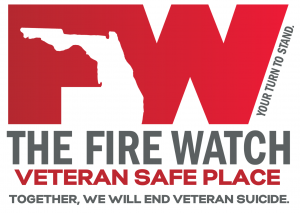What is Cerebral Palsy?
What is Cerebral Palsy?
Gaining overall awareness and education on specific disabilities can go a long way when it comes to creating a more inclusive workforce and society. At employU, we feel it is important to provide resources for the disability community. It is also just as important to provide resources for the general public when it comes to gaining knowledge and understanding of people with disabilities. Together, these sets of tools and resources can assist in breaking the stigma many people with disabilities face in the workforce.
Cerebral Palsy is a group of disorders that affect movement and muscle tone or posture. It’s caused by damage that occurs to the developing brain, most often before birth. Because cerebral palsy is a spectrum disorder, there is a wide range of severities and symptoms one with cerebral palsy can experience. This means no two cases of cerebral palsy are the same. This can make it difficult for others to understand the disability. But, like many other communities, the cerebral palsy community has worked hard to spread awareness and have their voices heard. The community continues to educate the public and demonstrate how those with cerebral palsy can accomplish goals, explore interests, and find their passions in life. employU client Chase, who is diagnosed with cerebral palsy, explains “I think I am a pretty normal guy. But I just do things a bit differently than others.”
Types of Cerebral Palsy
Generally, doctors classify cerebral palsy by the main type of movement disorder one is experiencing. One or more of the following movement disorders can occur, depending on which part of the brain has been affected.
Spastic Cerebral Palsy
Spastic cerebral palsy affects about 80% of people with cerebral palsy. People with spastic cerebral palsy have increased muscle tone, making their muscles stiff. Within spastic cerebral palsy, there are a few subcategories.
- Spastic diplegia/diparesis in which muscle stiffness occurs mainly in the legs. This may cause difficulty walking.
- Spastic hemiplegia/hemiparesis affects only one side of a person’s body. Typically, the arm is more affected than the leg.
- Spastic quadriplegia/quadriparesis affects all four limbs, the trunk, and the face. People with spastic quadriparesis usually can’t walk and commonly have other disabilities such as seizures or vision, hearing, or speech challenges.
Ataxic Cerebral Palsy
Ataxic cerebral palsy causes challenges with coordination and balance. Quick movements or movements that require fine motor skills, like writing, may be difficult.
Dyskinetic Cerebral Palsy (includes choreoathetoid, athetoid, and dystonic cerebral palsies)
Dyskinetic cerebral palsy causes involuntary movements that may appear more noticeable when a person attempts to move. Many body parts can be affected including hands, feet, arms, legs, face, and tongue. This often causes difficulty walking.
Mixed Cerebral Palsy
Mixed cerebral palsy is a combination of two or more types of cerebral palsy. The most common type of mixed cerebral palsy is spastic-dyskinetic cerebral palsy.
Living with Cerebral Palsy
Though cerebral palsy can significantly impact day to day activities, many people are able to accomplish their goals and pursue their interests. Chase is a perfect example of that. “[Cerebral Palsy] impacts my motor skills like walking and talking. However, I can do both well with assistive devices and equipment. Although I may do things a bit differently than others, I live my life like everyone else,” he explains. “I’ve been able to travel the United States to see games at 20 major league Baseball Stadiums.” A lifelong sports fan, Chase also found a way to get involved in high school sports. “Since I can remember I have been watching sports… Going into sports management…I still got to be a part of high school sports. Just in a different way.” Today, Chase remains involved in sports and assists in coaching high school sports.
He also has a career that he is deeply passionate about. Chase now works as the Community Outreach Specialist at the YMCA. “I spend time reaching out to community partners to let them know about our program. I help Mr. Rolands and the staff engage our students in discussions during planned activities. Some of the talks we get into around the center focus on self-awareness, affirmations, and weekly check-ins. These conversations and check-ins really help set the tone for learning.” Chase not only enjoys his job, but he hopes to make a positive impact on the students within the program. “My favorite part of the job is the relationships we have built. …Part of my long-term career goal is to continue working and contributing here at the center. …I’d also like to continue volunteering and coaching high school sports. …If the next few decades are as good as the days are today, it wouldn’t be too bad of a life for me.”
To learn more about Cerebral Palsy and the resources available visit https://cpresource.org/
To learn more about Chase’s journey, watch the video below.
Contact Us




 .
.
Latest News